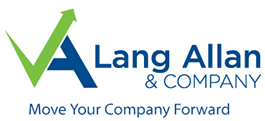When a construction business doesn’t have a clear idea of its annual budget, it runs the risk of spending more money than it earns that year. You may have been running smoothly for years, and then decide to expand or replace old machinery. There’s money coming in, so it seems you’re fine. But if you don’t have a good handle on expenses versus income, you can quickly find yourself in the red.
Maybe you want to apply for a loan. If so, the bank is certainly going to want to see a formal budget as part of your business plan.
Basic budgeting techniques
Budgeting can be done in different ways with different processes, depending on the particular business and the people involved. However, there are several universal parameters within a typical budget plan that provide a foundation. For instance, most businesses make a rent or mortgage payment on their premises.
Next, there are basic overhead costs such as utility bills, payroll expenses, and raw material costs, as well as interest, insurance, and tax payments. As a construction expert, you may know that, but have you considered some of the “softer” expenses, such as website development, signage for your business, business cards, and advertisements?
These are safe initial elements when developing a budget plan, and then you can add any expenses that are specific to your business. As a construction business, there are several key expenses you need to account for, including:
- Business permits and licensing requirements.
- Salaries, wages, and benefits for you and your employees.
- Tools, supplies, and inventory.
- Loan and credit card payments.
- Services such as accounting, maintenance, and marketing.
- Heavy machinery and vehicle or equipment payments, fuel, and insurance.
If you are just launching your business, you may need to do some research to come up with estimates of monthly expenses. If your business is already established, you can base your assumptions of future costs or revenues on your past 12 months of figures.
A typical 12-month budget can be updated with actual expenditures and revenues each month so you know whether you are on target for your goals. Many plans feature one column of estimated expenses, with one blank column next to it where businesses fill in their actual expenses each month to track and compare.
If you are missing your planned targets, you can then apply the plan to troubleshoot by figuring out how you can reduce expenses like labor or new machinery, increase your sales with more aggressive marketing, or lower your profit expectations.
By charting a comprehensive budget plan, you can enhance your chances of your business succeeding by anticipating future needs, spending, profits, and cash flow. A good budget provides a detailed road map so that you are not driving your business blindly. When done correctly, it will provide clear insight into how your business is performing to help you achieve growth and success.
If you want more details on getting your budget going, give us a call.
